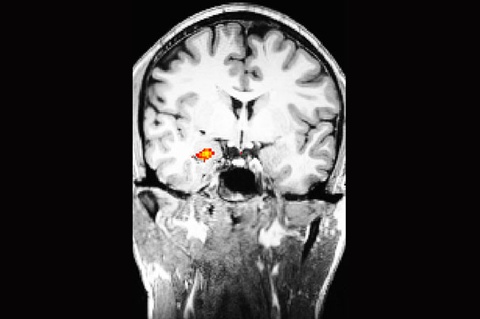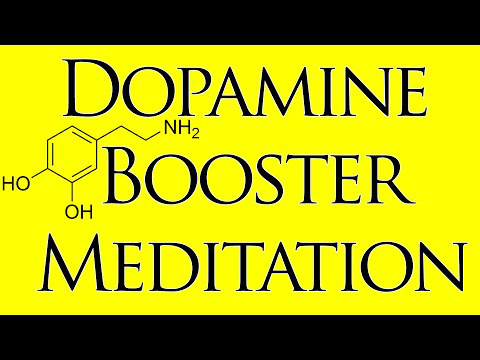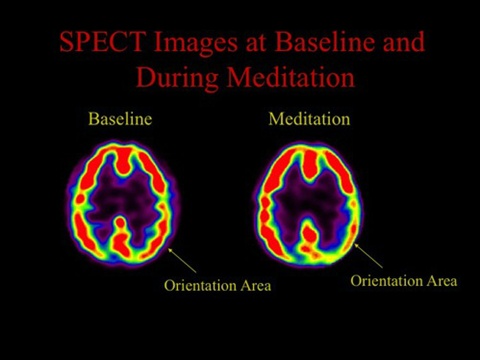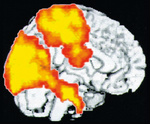S #01 - Mindfulness & Compassion Meditation reduced emotional response even to positive and neutral images by overly calming the amygdala. ( This is bad news for normal people )
Your amygdala is where you experience the "fight or flight" response. An overly stimulated amygdala results in stress and depression.
The study was designed to test the hypothesis that meditation training could also produce a generalized reduction in amygdala response to emotional stimuli, measurable by functional magnetic resonance imaging (fMRI).
Participants had enrolled in a larger investigation into the effects of two forms of meditation:
1) mindful attention meditation and
2) compassion meditation.
3 weeks after the meditation sessions, in the mindful attention group, the after-training brain scans showed a decrease in activation in the right amygdala in response to all images.
In the compassion meditation group, right amygdala activity also decreased in response to positive or neutral images.
Among those who reported practicing compassion meditation most frequently outside of the training sessions, right amygdala activity tended to increase in response to negative images, all of which depicted some form of human suffering.
http://news.harvard.edu/gazette/story/2012/11/meditations-positive-residual-effects/
Site comment : When you are normal, generalised reduction of amygdala activity even to positive images is not good news. In this study, the mind became overly sedated and tranquil to even positive and neutral images even 3 weeks after stopping meditation. Mindfulness reduced amygdala to even negative images when there should have been an increased compassionate response. Only "compassion meditation" had a positive effect of an increase in compassionate response.
If you were overly stressed and have trouble concentrating, meditation may help you overcome your stress and recover your concentration in the short term. However, once you have recovered and think that you can experience a "lift" in your life by futher meditation, that expectation may not occur as sedated tranquility will depress your normal response even delightful images. For normal people in meditation, delightful images are not as delightful as before ! However you are compensated with sedated tranquility.
S #02 - Meditation causes increased endogenous dopamine which causes addiction and visualization
Using 11C-raclopride PET they demonstrated increased endogenous dopamine release in the ventral striatum during Yoga Nidra meditation. Yoga Nidra is characterized by a depressed level of desire for action, associated with decreased blood flow in prefrontal, cerebellar and subcortical regions, structures thought to be organized in open loops subserving executive control.
The increase corresponds to a 65% increase in endogenous dopamine release. http://www.yogameditation.com/reading-room/pictures-of-the-brains-activity-during-yoga-nidra/
All participants reported a decreased desire for action during meditation, along with heightened sensory imagery
http://www.sciencedirect.com/science/article/pii/S0926641001001069
This paper focus on the role of dopamine (DA) in cognitive vision, and present biological findings that suggests that DA is at a central place to favorize not only the guidance of attention towards relevant locations but also in more cognitive processes like visual working memory.
http://link.springer.com/chapter/10.1007/978-3-540-77343-6_23
Site Comment : Dopamine is responsible for addiction and heightened visual imagery. Consequently, this accounts for the common observation of meditation addiction when contemplatives become "junkies". That dopamine causes visualization explains the experiences in meditation of seeing sound or energy as lights, seeing angels, God, past life etc, etc all of which are not real but just neural phenomena.
S #03 - Not only alpha & theta brain waves but actually asleep in meditation
The second study published in 1976 examined the physiology of five experienced transcendental meditators. There was an unexpected result: the measures of brain activity suggested that the meditators spent a substantial part of their meditation time sleeping (12) .
The authors wondered if, although fully awake, meditation put the group in a brain state similar to that of sleep. It didn’t. The meditators themselves declared that they had fallen asleep in most of the sessions. The article concludes that meditation gives rise to different mental states, but there is nothing physiologically extraordinary about it.
12 - Pagano, R, Rose, R., Stivers, R. & Warrenburg, S. (1976). Sleep during Transcendental Meditation. Science, 191( 4224): pp. 308–310.
From book - Buddha Pill
Site Comment : Calmed amygdala, sleep waves,...sheer bliss and tranquility. The Dalai Lama said that " Sleep is the best meditation". Watch a young monk falling off to sleep but trying desperately to keep awake. Amusing.
S #04 – Meditation which empties the mind starves the frontal lobe of all incoming data causes altered state of reality associated with universal or God consciousness.
" First, you are focusing on something, usually it is a sacred object or an image or something like that, but, second, you also screen out irrelevant information. As you do this, more and more information that normally goes to the orienting parts of your brain doesn't go there. So it keeps trying to give you a sense of yourself, an orientation of that self in the world, but it no longer has the information upon which to do that.
And if you look at the orientation area, it goes dramatically down in its activity during the meditation practice. It is mostly yellow and just a little bit of red, compared to what you see in the normal waking state. So this area of the brain becomes much less active. We think this is part of what is associated with somebody losing that sense of self. They feel at one with God, at one with their spiritual mantra, whatever it is they are looking at."
Dr Andrew Newberg on meditation ( Tibetan )
Site Comment : The purpose of mantras or focussing on the flame of a candle, or a spot of light is to "empty the mind", "enter the silence" all of which is to deprive your brain of ALL incoming data. This takes for frontal lobe OFFLINE. The parietal lobe is then deactivated. The parietal tells you where you are in 3 dimensional space and dilienates your body shape and position. When your parietal goes down, you feel as one with the universe and the whole universe is you. This phenomena in combination with others are decribed as Nirvana ( if you are Hindu ), Awakening ( Buddhist ), Sartori ( Zen ) or being in the presence of God ( Christian ). One has to make sense of this out-of-this-world experience and it depends on your.spiritual pre-disposition.
Your anterior cingulate cortex in your frontal lobe is responsible for love, empathy, your will and choosing right from wrong. When the frontal lobe is offline in meditation, it is impossibility that a meditator can sense the presence of God Who is love.
The above eastern terms describe the peak meditation experience; for more insight into spiritual aspects of these non-dual experiences go to R #02
Watch this video to diffrentiate between meditation types:
https://www.youtube.com/watch?v=MpdtnLHDViQ
S #05 - Non-focused non-directional meditation like Yoga Nidra reduces cerebral blood flow in pre-frontal cortex and researchers describe the frontal lobe as going offline.
S #06 Mindfulness meditation provides escape from trauma depression more than from other causes of depression
Extract from book " Buddha Pill "
The Oxford Mindfulness Centre scientists expected MBCT to reduce depression relapse when compared with the groups undergoing cognitive psychological education and their usual treatment. Such a finding would prove that mindfulness meditation is the magical ingredient in the MBCT treatment of recurrent depression. However, the results did not support the hypothesis: the relapse rates were close to 50 per cent for all three groups..... Mindfulness worked better for participants with a history of childhood trauma and abuse. If you had a high score on trauma and abuse as a child and were in the mindfulness therapy group, the rate for relapse was only 41 per cent compared to 55 per cent if you were in the cognitive education group and.........( perhaps ) mindfulness meditation allowed them to bypass or flee the emotional pain – a kind of ‘red balloon effect’
The Red Balloon (1956) is a French film ..... perfect metaphor for human desire to bypass reality, especially when the world has hurt us badly. Watch The Red Balloon video here. https://www.youtube.com/watch?v=e2Y1tRBOXfA
" Buddha Pill" comment : Only four years previously the British National Institute for Health and Care Excellence (NICE) 18 had given MBCT a ‘key priority status’. In other words MBCT had been recommended as one of the best psychological interventions to prevent recurrent depression, when drugs have failed – a recommendation that now seemed premature.
S #07 - Meditation & Hypnosis
The kinds of hypnotic suggestions vary according to the meditators peer group, guru or religious foundation. Whilst the wife found that meditation offerred in her workplace helped her concentrate in her job, her husband meditating in a Buddhist temple saw his past life.
Many scientists confirm that eastern meditation is self-hypnosis. Newberg & Iversen,2003; Travis et al., 2002 - Sometimes meditation results in profound changes in consciousness leading individuals into trance-type states, states of self-hypnosis, or mystical states
Columbia University - Hypnosis decouples cognitive control ( the WILL in the anterior cingulate cortex ) from conflict monitoring processes ( your REALITY in the lateral frontal cortex ) of the frontal lobe.
What part does hypnosis play in eastern meditation? Hypnosis is the ability to pass a suggestion that is accepted. What are the suggestions that are accepted through eastern meditation ?
Your WILL resides in the frontal lobe of your brain in your anterior cingulate cortex, and your sense of REALITY also resides in your frontal lobe in your lateral frontal cortex. After successful the WILL is decoupled from REALITY. In eastern meditation, the frontal lobe is taken offline ( reduced blood flow, sleep waves and intentional meditative deprivation ) with the result that both the WILL and REALITY is also taken offline.
What are the suggestions that are then readily hypnotically accepted?
Now, Christians are using eastern techniques but dressed in Christian language like contemplation, breath prayers, centering prayer etc and the pervasive suggestion even before one starts meditation is to come into the intimate presence of God. When the frontal goes offline and the parietal lobe is deactivated, the suggested is accepted. But its only a hypnotic suggestion accepted. If that particular Christian is only nominal, unconverted or backslidden, he may be so deceived as to live out his life without knowing the authentic reality of God.
Watch a 6 minute video on meditation and hypnosis.
https://www.youtube.com/watch?v=l92TLi-HB_s&feature=youtu.be
Under hypnosis, the subject is wide open to all forms of "suggestion" from another person, the subjects meditation group or guru and also spiritual evil agencies. Moreover, the various neural phenomena that occurs in combination are so new that the subject needs to make sense of them. Under these circumstances can the claim that these experiences are God-Encounters or God-Consciousness be trusted ?







Latest comments
Hi there, I am interested in becoming a certified meditation instructor/coach, what would you say is the best in order for me to receive these credentials. Christ centered of course. Thanks.
Hello "m". Please do send me an e-mail. If my e-mail address is not attached to this reply, you can see my e-mail address on this webpage:
https://awa7.org/about-awa-contact-us
Would like to contact Will Baron about Feldenkrais, Rolfing, applied kinesiology comparisons. If you have any free material on mysticism, I would like for the research group to send them to me. Thanks
Hi. Where are you going after Portland? Coming to Southern California? I will watch your 3 talks in Portland in sequence. Thanks.